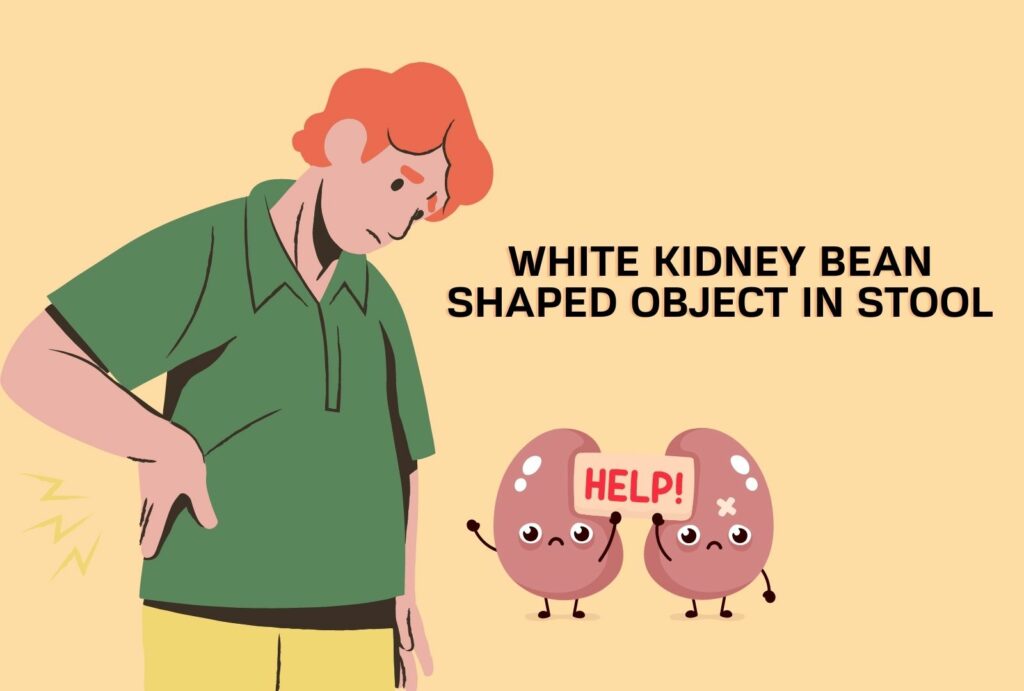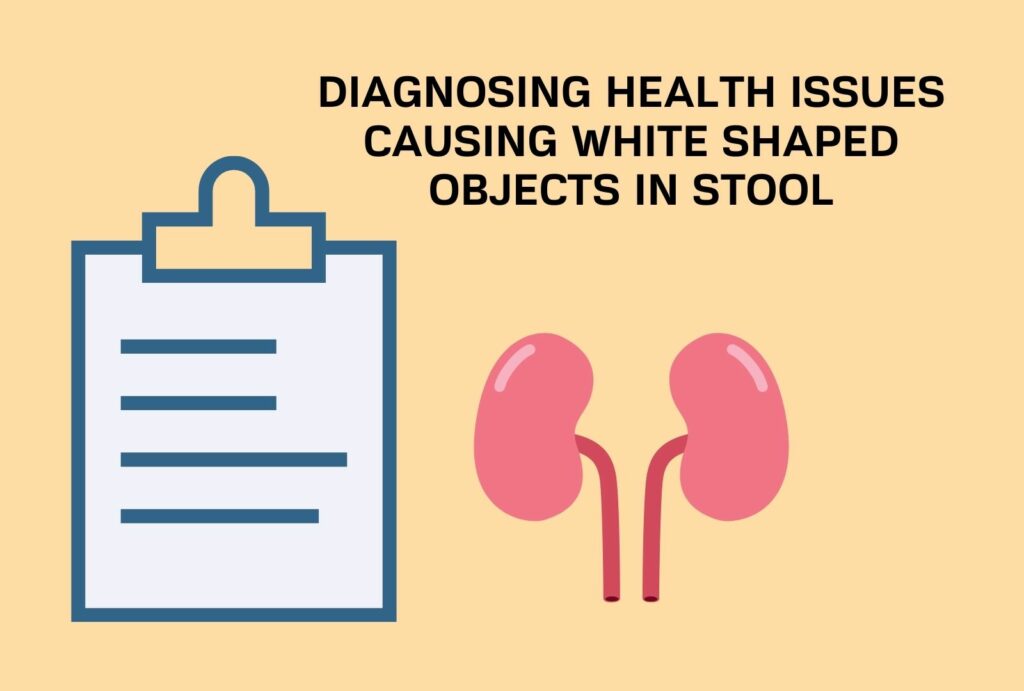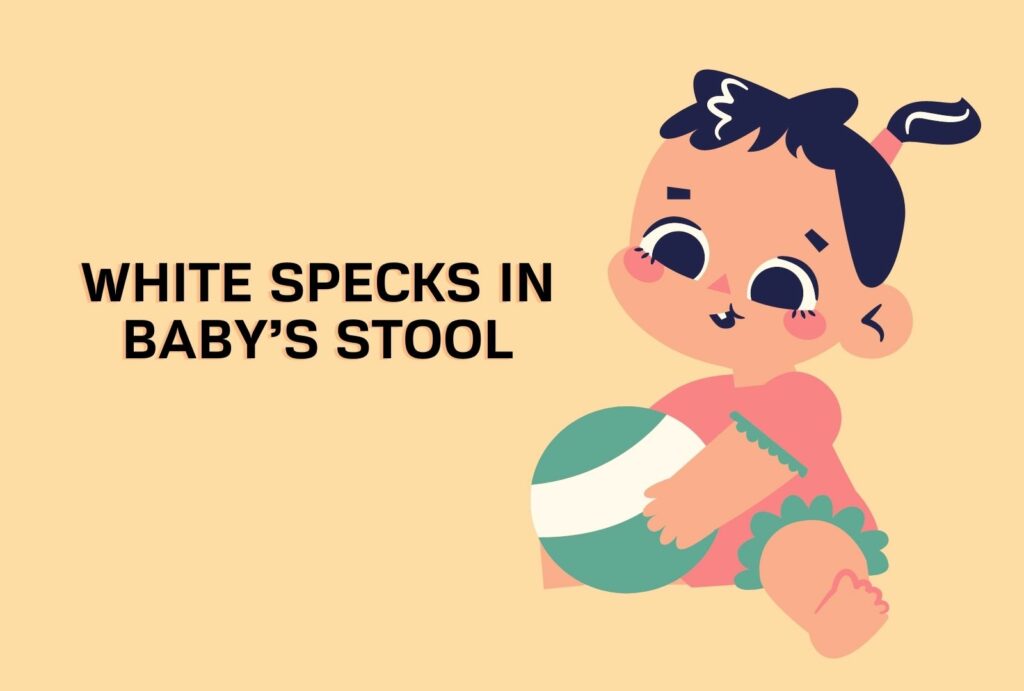
A white kidney bean shaped object in stool can be a cause for concern, as it may indicate an underlying health condition. There are several possible causes for this, including digestive issues, medication side effects, or even parasites. It’s important to get a proper diagnosis in order to determine the cause and appropriate treatment.
Undigested food
One possible cause for a white kidney bean shaped object in stool is undigested food. This can occur when the body is unable to properly break down and absorb certain foods, such as high-fiber vegetables or beans. In some cases, this undigested food may appear in the stool in a recognizable shape, such as a white kidney bean.
Side effects
Another possible cause is medication side effects. Some medications, particularly those that contain iron, can cause stool to appear pale and take on a white or grayish color. Additionally, some medications may cause undigested particles to appear in the stool, including white kidney bean shaped objects.
Parasitic infection
In some cases, a white kidney bean shaped object in stool may be a sign of a parasitic infection. Parasites such as tapeworms and roundworms may be visible in the stool, and can cause a range of symptoms including abdominal pain, nausea, and diarrhea. If you suspect that you may have a parasitic infection, it’s important to seek medical attention right away in order to receive appropriate treatment.
Diagnosing the cause of a white kidney bean shaped object in stool typically involves a thorough medical evaluation, including a physical exam and possibly laboratory tests. Your doctor may ask about your symptoms, diet, and any medications you are taking, in order to determine the most likely cause of your symptoms.
If you are experiencing a white kidney bean shaped object in stool, there are some precautions you can take to help manage your symptoms. For example, you may want to avoid foods that are difficult to digest, such as high-fiber vegetables and beans. Additionally, it’s important to stay hydrated and maintain a healthy diet in order to support your digestive system.
In summary, a white kidney bean shaped object in stool can be a sign of an underlying health condition, and it’s important to seek medical attention if you are experiencing this symptom. Your doctor can help you determine the most likely cause and appropriate treatment plan, as well as provide guidance on how to manage your symptoms and promote digestive health.
Causes of white kidney-shaped object in stool
Finding a white kidney bean shaped object in stool can be a concerning experience. It’s important to understand the possible causes of this symptom in order to receive the appropriate treatment. There are several conditions that can lead to the presence of a white kidney bean shaped object in stool, including digestive issues, medication use, and parasitic infections.
Malabsorption
One possible cause of a white kidney bean shaped object in stool is malabsorption. Malabsorption occurs when the body is unable to properly absorb nutrients from food. This can lead to undigested food particles appearing in the stool, including white kidney bean shaped objects. Malabsorption can be caused by a variety of conditions, including celiac disease, Crohn’s disease, and pancreatic insufficiency.
Certain medications
Another possible cause of a white kidney bean shaped object in stool is the use of certain medications. Iron supplements and other medications that contain iron can cause stool to appear pale and take on a white or grayish color. In some cases, these medications can cause undigested particles to appear in the stool, including white kidney bean shaped objects.
Parasitic infections
Parasitic infections can also be a cause of white kidney bean shaped objects in stool. Tapeworms and roundworms are the most common parasites that can cause this symptom. These parasites can enter the body through contaminated food or water and can lead to a range of symptoms, including abdominal pain, diarrhea, and weight loss.
Inflammatory bowel disease (IBD)
Inflammatory bowel disease (IBD) can also be a cause of a white kidney bean shaped object in stool. IBD is a chronic condition that causes inflammation in the digestive tract. This inflammation can lead to a range of symptoms, including diarrhea, abdominal pain, and the presence of undigested food particles in the stool.
In summary, there are several possible causes of a white kidney bean shaped object in stool, including malabsorption, medication use, parasitic infections, and inflammatory bowel disease. If you are experiencing this symptom, it’s important to speak with your healthcare provider to determine the underlying cause and receive appropriate treatment. Depending on the cause of the symptom, treatment may involve changes in diet, medication adjustments, or anti-parasitic medication.
Diagnosing health issues causing white shaped objects in stool

If you’ve noticed a white kidney bean shaped object in your stool, it’s important to seek medical attention in order to determine the underlying cause. Your healthcare provider can perform a thorough evaluation to diagnose the condition that’s causing this symptom. The diagnostic process may involve a physical exam, laboratory tests, and imaging studies.
During a physical exam, your healthcare provider may ask questions about your symptoms, medical history, and diet. They may also perform a physical exam to look for signs of underlying health conditions that could be causing the white kidney bean shaped object in stool. This may include examining the abdomen for signs of inflammation or infection.
Laboratory tests can also be useful in diagnosing the underlying cause of a white kidney bean shaped object in stool. Stool tests can be used to check for the presence of parasites or other infectious agents that could be causing your symptoms. Blood tests may also be performed to check for signs of inflammation or infection in the body.
Imaging studies, such as X-rays, CT scans, or ultrasound, may be used to examine the digestive tract and look for signs of abnormalities. These tests can help your healthcare provider identify conditions such as inflammatory bowel disease or malabsorption syndromes that could be causing your symptoms.
Once the underlying cause of your symptoms has been identified, your healthcare provider can work with you to develop an appropriate treatment plan. Treatment options may include changes in diet or medication adjustments, depending on the underlying condition. In some cases, anti-parasitic medication may be prescribed to treat parasitic infections that are causing white kidney bean shaped objects in stool.
In summary, diagnosing the underlying cause of a white kidney bean shaped object in stool typically involves a thorough medical evaluation, including a physical exam, laboratory tests, and imaging studies. Once a diagnosis has been made, your healthcare provider can work with you to develop an appropriate treatment plan to manage your symptoms and address the underlying condition.
Precautions
Taking precautions can help prevent the occurrence of a white kidney bean shaped object in stool and protect your overall digestive health. Here are some precautions to keep in mind:
- Maintain good hygiene:
Practicing good hygiene can help prevent the spread of parasitic infections that can cause white kidney bean shaped objects in stool. This includes washing your hands thoroughly with soap and warm water after using the bathroom and before preparing or eating food.
- Cook food thoroughly:
Cooking food thoroughly can help kill parasites and other infectious agents that may be present. Make sure to cook meat, poultry, and fish to their recommended internal temperatures before consuming.
- Stay hydrated:
Dehydration can contribute to digestive issues and increase the risk of malabsorption syndromes. Make sure to drink plenty of water throughout the day to stay hydrated and support healthy digestion.
- Be mindful of medication use:
Certain medications, such as iron supplements, can cause pale or white stool and the appearance of undigested particles, including white kidney bean shaped objects. If you’re taking medication and notice this symptom, talk to your healthcare provider about adjusting your dosage or switching to a different medication.
- Seek medical attention if symptoms persist:
If you notice a white kidney bean shaped object in your stool or experience other digestive symptoms such as abdominal pain, diarrhea, or nausea, it’s important to seek medical attention. Your healthcare provider can perform a thorough evaluation to determine the underlying cause and develop an appropriate treatment plan.
In summary, taking precautions such as practicing good hygiene, cooking food thoroughly, staying hydrated, being mindful of medication use, and seeking medical attention if symptoms persist can help prevent the occurrence of a white kidney bean shaped object in stool and protect your overall digestive health.
Further complications
Ignoring the presence of a white kidney bean shaped object in stool or failing to address the underlying cause can lead to further complications. Here are some potential complications to be aware of:
- Malnutrition:
If the white kidney bean shaped objects are a result of malabsorption syndromes, it can lead to malnutrition as the body is unable to absorb essential nutrients from food. Over time, this can lead to a range of health issues, including fatigue, weakness, and an increased risk of infections.
- Digestive disorders:
White kidney bean shaped objects in stool may also be a sign of an underlying digestive disorder, such as inflammatory bowel disease (IBD) or celiac disease. If left untreated, these conditions can lead to more serious health complications, including bowel obstruction, severe malnutrition, and an increased risk of colon cancer.
- Parasitic infections:
In some cases, the presence of white kidney bean shaped objects in stool may be a sign of a parasitic infection. If left untreated, parasitic infections can cause a range of symptoms, including diarrhea, abdominal pain, and fatigue. In severe cases, they can lead to dehydration, malnutrition, and other serious health complications.
- Anxiety and stress:
The presence of white kidney bean shaped objects in stool can also be a source of anxiety and stress. If left untreated, these feelings can lead to more serious mental health issues, including depression, anxiety disorders, and sleep disturbances.
In summary, ignoring the presence of a white kidney bean shaped object in stool or failing to address the underlying cause can lead to further complications, including malnutrition, digestive disorders, parasitic infections, and anxiety and stress. If you notice this symptom, it’s important to seek medical attention in order to determine the underlying cause and develop an appropriate treatment plan.
White specks in baby’s stool

If you’re a parent, finding white specks in your baby’s stool can be concerning. While it’s normal for babies to have different types of stool as their digestive system develops, white kidney bean shaped objects in stool can indicate an underlying health issue. Here’s what you need to know:
- Possible causes:
The presence of white kidney bean shaped objects in a baby’s stool can be caused by a variety of factors, including the introduction of new foods, an allergic reaction, or an infection. In some cases, the objects may be a result of undigested milk protein or fat.
- Consult with a pediatrician:
If you notice white kidney bean shaped objects in your baby’s stool, it’s important to consult with a pediatrician. They can perform a thorough evaluation and help determine the underlying cause. In some cases, they may recommend testing for food allergies or intolerances.
- Treatment options:
Treatment options for white kidney bean shaped objects in a baby’s stool will depend on the underlying cause. For example, if the objects are a result of an allergic reaction, the baby may need to avoid certain foods or switch to a hypoallergenic formula. In some cases, medication or other interventions may be necessary.
- Prevention:
To help prevent the occurrence of white kidney bean shaped objects in a baby’s stool, it’s important to follow recommended feeding guidelines and introduce new foods gradually. If your baby has a history of food allergies or intolerances, it’s important to work closely with a pediatrician to develop a safe feeding plan.
In summary, finding white kidney bean shaped objects in a baby’s stool can be concerning, but it’s important to remember that there are many possible causes. Consulting with a pediatrician, following recommended feeding guidelines, and developing a safe feeding plan can help prevent and address this symptom.
FAQs
- What are white kidney bean shaped objects in stool?
White kidney bean shaped objects in stool are small, white or cream-colored objects that resemble the shape of a kidney bean. They can vary in size and texture and are often a sign of an underlying health issue.
- What causes white kidney bean shaped objects in stool?
White kidney bean shaped objects in stool can be caused by a variety of factors, including malabsorption syndromes, digestive disorders, parasitic infections, or an allergic reaction.
- Are white kidney bean shaped objects in stool a cause for concern?
While the presence of white kidney bean shaped objects in stool can be concerning, it’s important to remember that they can have many possible causes. Consulting with a healthcare provider is the best way to determine the underlying cause and develop an appropriate treatment plan.
- How are white kidney bean shaped objects in stool diagnosed?
Diagnosis of white kidney bean shaped objects in stool typically involves a physical exam, review of medical history, and laboratory testing, including stool analysis and blood tests.
- How can I prevent white kidney bean shaped objects in stool?
Prevention of white kidney bean shaped objects in stool depends on the underlying cause. Following a healthy diet, staying hydrated, and practicing good hygiene can help prevent parasitic infections. Working closely with a healthcare provider to manage digestive disorders or food allergies can also help prevent this symptom.
- When should I seek medical attention for white kidney bean shaped objects in stool?
If you notice white kidney bean shaped objects in your stool or your child’s stool, it’s important to seek medical attention. This can help determine the underlying cause and prevent further complications. If you experience severe abdominal pain, fever, or other concerning symptoms, seek emergency medical care immediately.
To summarize
In conclusion, white kidney bean shaped objects in stool can be a sign of an underlying health issue. These objects can have many possible causes, including malabsorption syndromes, digestive disorders, parasitic infections, or an allergic reaction. It’s important to consult with a healthcare provider to determine the underlying cause and develop an appropriate treatment plan.
Diagnosis of white kidney bean shaped objects in stool typically involves a physical exam, review of medical history, and laboratory testing, including stool analysis and blood tests. Treatment options will depend on the underlying cause and may include medication, dietary changes, or other interventions.
Prevention of white kidney bean shaped objects in stool depends on the underlying cause. Following a healthy diet, staying hydrated, and practicing good hygiene can help prevent parasitic infections. Working closely with a healthcare provider to manage digestive disorders or food allergies can also help prevent this symptom.
If you notice white kidney bean shaped objects in your stool or your child’s stool, it’s important to seek medical attention. This can help determine the underlying cause and prevent further complications. If you experience severe abdominal pain, fever, or other concerning symptoms, seek emergency medical care immediately.
In summary, while finding white kidney bean shaped objects in stool can be concerning, it’s important to remember that there are many possible causes. Consulting with a healthcare provider, following a healthy diet, and practicing good hygiene can help prevent and address this symptom.